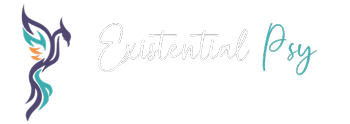✦ Do you perceive emotions and thoughts as embodied phenomena? Or purely mental constructs? Are you aware of how each emotion or thought might carry with it a corresponding physical resonance or texture within the body, speaking to a deeper unity and harmony of experience?
✦ How do you conceive of the relationship between mind, heart, body, and the world? Do you see them as separate entities, or do you lean towards a more holistic view where the mind is both embodied and relational, interwoven with the physical form and its movements through the world?
✦ What is your understanding of how the body, through its postures, gestures, and sensations, influences thoughts and emotions? Do you consider the idea that the body is not merely a vessel for the mind but an active participant in constructing reality and meaning?
Synopsis
In ancient civilizations, holistic and non-dualistic approaches to medicine were deeply rooted in the understanding that mind, body, spirit and the world were interconnected, and health was a state of balance and harmony among these elements. These cultures did not view the body and mind as separate entities but rather as integrated parts of a unified whole, where physical, mental, emotional, and spiritual dimensions were seen as inter-related.
How has those centuries of human wisdom gotten so dramatically lost, leading to the narrow, limited and disjointed view of the human phenomenon that characterises our current health and well-being paradigms? How did we lose sight of our naturally integrated, symbiotic connection with the world within, and the world beyond ourselves?
In the last few decades there’s been a resurgence of a more holistic, integrative view of the embodied relational mind, significantly aided by the development of new technologies like FMRI (Functional Magnetic Resonance Imaging) and PET (Positron Emission Tomography) scanning that allow neuroscientists to study the correlation between brain activity, manifestations in the body, and the mind much closer.
The therapeutic process I facilitate for clients is an existential exploration aimed at uncovering the authentic self, where the mind is conceptualized as embodied, interconnected, and dialogical. It is continuously engaged in dynamic interactions with the environment, seeking meaning and coherence through these ongoing exchanges.
The Lost Wisdom
Egyptian medicine was advanced in its use of surgical techniques, herbs, and pharmacology, it also relied heavily on spiritual rituals, amulets, and prayers to address both physical and metaphysical causes of illness. The Egyptians believed that the heart was the centre of thought, emotion, and personality, and treatments often sought to restore harmony between the body and the spiritual world.
medicine through shamanic and animistic frameworks that view all of life as interconnected. These traditions often involve rituals, herbal medicine, spiritual practices, and community support to restore harmony. The human being is seen as part of the natural world, with health being a state of balance between the self, the community, and the surrounding nature. Illnesses are understood to have spiritual, psychological, and physical dimensions, and the shamanic healing practices address all of these aspects simultaneously through ceremonies, prayers, herbal remedies, and shamanic journeys, some of which take place in skilfully-induced altered states of consciousness.
Unfortunately, much of the ancient integrative wisdom that recognized the deep interconnection between mind, body, and spirit has been largely lost over the centuries. This holistic understanding, which viewed health as a harmonious balance of the physical, emotional, mental, and spiritual dimensions, was overshadowed by the rise of dualistic models introduced by thinkers like René Descartes. Cartesian dualism, which separated the mind and body into distinct, non-interacting entities, became the dominant paradigm in Western medicine and psychology.
This split not only shaped scientific inquiry but also led to a fragmented approach to health and therapy, where the body was treated as a mere machine and the mind as an abstract, detached entity. As a result, the richness of ancient practices that addressed the human experience as an inseparable whole was side-lined, diminishing the recognition of how deeply our emotions, thoughts, and physical states are interwoven.
This shift has impacted modern healthcare and therapeutic practices, often reducing them to isolated treatments that overlook the complexity of human existence and the profound interconnectedness that ancient civilizations intuitively understood.
Mind versus Body: Duality and the Loss of Wholeness
- Res Cogitans (the “thinking substance” or mind): the non-material, non-extended substance responsible for consciousness, thoughts, beliefs, desires, and emotions. According to Descartes, the mind is not subject to the laws of physics and is therefore free and independent of the material world.
- Res Extensa (the “extended substance” or body): the physical, material substance that occupies space and is subject to the laws of physics. The body is characterized by its extension in space, divisibility, and the ability to be measured and quantified.
Despite postulating that the mind and body are fundamentally different substances, Descartes argued that they can interact with each other. He theorised that mental states (like desires and intentions) could cause physical actions (like moving an arm), and physical states (like a pinprick) could cause mental states (like feeling pain). Still, they were considered completely separate elements, only interacting with each other in a mechanistic way.
This perspective fundamentally influenced early psychology, which treated mental processes (thoughts, emotions, consciousness) as distinct from the brain’s physical functions and, more dramatically, the body as a whole. As a result, for much of the 19th and well into the 20th centuries, psychology had developed as a “science of the mind,” somewhat separate from physiology and medicine, which studied “the body.”
This perspective shaped the development of the Western mainstream medicine in the 19th, 20th and to a large extent into the 21st centuries, where the body has been primarily treated as a complex biological machine that can be analysed, diagnosed, and repaired without direct reference to the mind or emotions. Whilst this view helped lay the foundation for modern anatomical, physiological, and medical sciences, leading to advancements in surgery, pharmacology, and diagnostics, it completely disregarded factoring the mind into the overall view of the human being.
This approach encouraged specialisation in medical practice, where the focus on bodily systems, organs, and diseases led to the development of various medical specialties like cardiology, neurology, or psychiatry. However, this specialisation had the unfortunate side-effect of reducing complex human experiences, such as pain, illness, or health, to purely physical causes, neglecting psychological, emotional, cultural, or social factors.
The Embodied and Relational Mind: Rediscovering Ancient Wisdom
Ethics. Spinoza argued that there is only one substance in the universe, which he identified as Nature (Deus sive Natura). Contrary to Descartes’ dualism, Spinoza proposed mind-body parallelism and the concept of “one and the same thing, understood in two different ways”. He argued that the mind and the body are two attributes of the same unity, one seen from the perspective of thought and the other from the perspective of manifestation. In other words, every mental state (conscious and/or non-conscious) has a corresponding physical state, and vice-versa. This idea had a profound impact on later philosophies of mind and influenced the development of modern integrative psychology and neuroscience, and can be seen as a precursor to contemporary theories of embodied cognition.
Their dialogues extended her critique of Descartes’ mind-body dualism, as Leibniz, too, sought to address the complexities of the mind-body relationship, though from a different angle. Leibniz developed his own solution to the mind-body problem through his concept of pre-established harmony. He rejected the idea of direct interaction between mind and body, instead proposing that mind and body operate in parallel, like two clocks synchronized by God from the outset, each following its own predetermined course without actual causal influence between them.
Inter-relation of Body, Brain, Mind and the World
In the latter part of the 20th century, fields like psychosomatic medicine, integrative medicine, and holistic healthcare have emerged, promoting a more integrated view that considers both psychological (mental) and physiological (somatic) factors in health and disease.
of reality based on prior experiences and bodily feedback. Our perceptions are thus not direct representations of reality but are influenced by the body’s internal states and the brain’s predictive mechanisms. This understanding is much in line with the idea that the mind is an embodied phenomenon, dynamically constructing our sense of reality through ongoing interaction with our physical and social environment.
unresolved fight, flight, or freeze responses get “stuck” in the body. Their work and significant supporting evidence points out that traumatic memories can lead to physical sensations, flashbacks, and dissociation, all of which are stored in the body’s memory systems rather than solely in the conscious mind, as comprehensively rounded up by Natasha Noel Liebig in her paper on “Trauma, Embodiment, and Compromised Agency”.
the unconscious sensing of safety and threat. This process is deeply embodied, influencing how we experience emotions, form relationships, and regulate our autonomic nervous system. The Polyvagal Theory explains how the autonomic nervous system regulates emotional and social behaviour through three hierarchical pathways: the ventral vagal (social engagement and calm), sympathetic (fight or flight), and dorsal vagal (shutdown or freeze).
The theory emphasizes the role of the vagus nerve (which runs independently through a separate pathway than the spine) in shaping how we respond to stress and social cues. Interoception, the ability to sense internal bodily states, constantly feeds back information from the body to the brain, such as changes in heart rate, breathing, or gut feelings, which the body uses in the neuroceptive process.
Our nervous system continuously assesses safety or danger, influencing our ability to connect with others, regulate emotions, and respond to threats, with evolutionary adaptations ensuring survival through flexible physiological responses. It is a fully embodied process that is equally influenced by its relationship with the world.
You and the Embodied Relational Mind
Applying existential psychology on the reality of the embodied mind offers a holistic model for coaching and psychotherapy that deeply honours the full spectrum of human experience. Existential psychology focuses on fundamental questions of existence such as meaning, freedom, authenticity, belonging, and relational dynamics, guiding you to confront and embrace the holistic reality of your being.
When applied in conjunction with the embodied mind framework, this approach becomes even more profound by recognising that our existential concerns are not just abstract thoughts but are also felt deeply in our bodies, influencing our sensations, behaviours, and physiological states.
By addressing existential, embodied and relational dimensions, this integrated model allows you to explore your core values, face existential anxieties, and align your actions with a deeper sense of purpose, while simultaneously tuning into the somatic signals and emotional patterns that shape your lived experience. This synthesis provides a comprehensive path to healing and growth, where self-awareness, emotional regulation, embodied insight, and authentic living come together to foster lasting transformation.
Application in Therapy
From neurobiology to affective neuroscience and trauma theory, the embodied relational mind is seen as a dynamic process of sensing, responding, and adapting to both internal and external realities. It is a mind that exists not in isolation but in constant dialogue with the body, other beings, and the world around us, seeking balance, meaning, and coherence through this interplay.
As highlighted above, this holistic perspective is backed by a growing amount of supporting evidence from contemporary neuroscience, trauma therapy, and existential psychology, emphasizing that well-being arises from a finely tuned, adaptive, and embodied engagement with both internal and external worlds.
In the existential psychotherapy that I practice, the integration of the embodied and relational mind speaks to the essence of human existence as both a bodily and intersubjective phenomenon. My phenomenological approach views the self not as a detached entity but as a being-in-the-world, where one’s physical sensations, emotions, and relational experiences are deeply intertwined with the quest for meaning and authenticity.
The embodied mind is always engaged with the world through the lived experience of the body, a medium through which we encounter both ourselves and others. In this view, our relationships, whether with people, nature, or even our own internal states, are inseparable from our bodily existence, and through these encounters we navigate the tension between freedom and limitation, self and other.
The therapeutic process I facilitate for my clients, therefore, is an existential journey toward uncovering the authentic self, where the mind is understood as embodied, interconnected, and dialogical, constantly seeking meaning and coherence through its dynamic engagement with the world around it. This philosophical lens highlights the profound responsibility we bear in shaping our existence, grounded in a holistic attunement to both the internal and relational realms of being.



